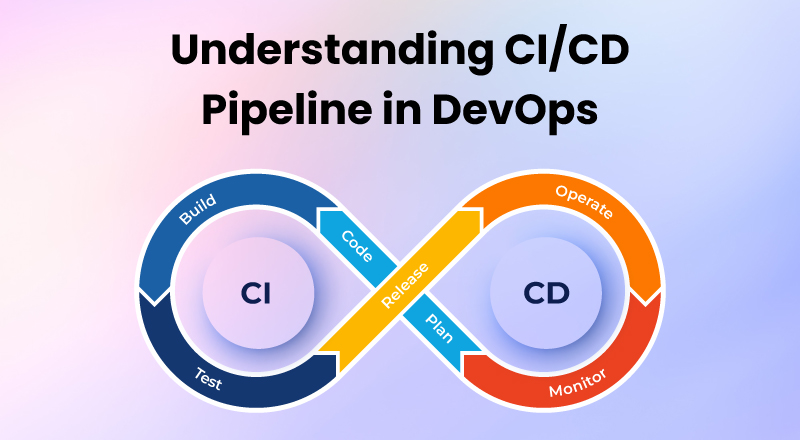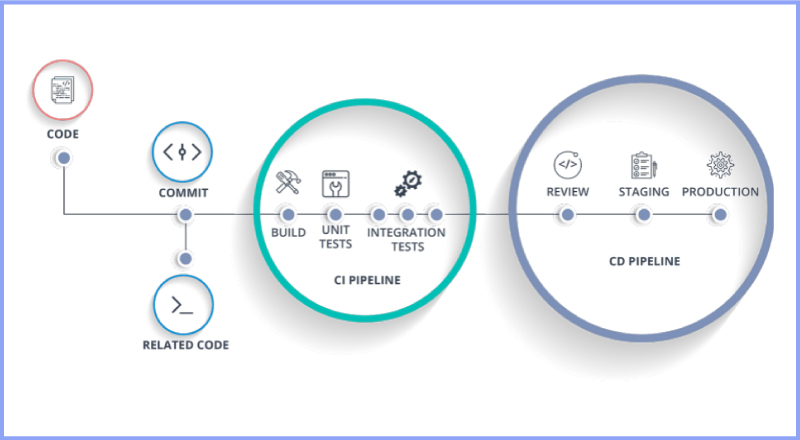

CI/CD stands for Continuous Integration and Continuous Delivery (or Continuous Deployment), and it’s a set of practices and principles used in software development and DevOps to automate and streamline the process of building, testing, and deploying software. CI/CD aims to make software delivery more efficient, reliable, and rapid.
In this article, we’ll get deep into the CI/CD pipeline, see how it relates to DevOps, and explore tools software teams can use in the CI/CD environment.


The continuous integration/continuous delivery pipeline is rightly called an agile DevOps workflow; it not only allows teams to adhere to a frequent deployment schedule but also ensures that the builds cater to reliable product releases.
This framework consists of the following:
Developers frequently merge their code changes into a shared repository – up to several times daily.
Automated build and testing processes are triggered each time code is pushed.
The goal is to quickly identify and address integration issues.
CD extends CI by automating the delivery process up to a staging or pre-production environment.
The software is always in a deployable state.
Manual intervention is often required to promote changes to production.
CD goes a step further than continuous delivery by automatically deploying code to production.
Human intervention may still be involved but is minimal, typically for approval or oversight.
The goal is to deliver changes to users as quickly and frequently as possible.
The CI/CD pipeline depends on multiple layers of test automation. Some of the main goals are to:
Build: This is a continuous integration phase where development teams build off source code and integrate new code.
Test: In both the continuous delivery and deployment stages, software teams test using automated processes.
Deliver: This is an automated stage where the approved code is sent to the production environment. It is carried out with the developer’s approval in continuous delivery and sans human intervention in continuous deployment.
Deploy: The deployment is where the final product is pushed to production.
It is crucial to ensure that software development processes are efficient but also safe and reliable. Here are some key considerations for integrating security into your CI/CD pipeline:
Where organizations bake security into all phases of the software development life cycle, in a DevOps environment — it is called DevSecOps. It ensures that security protocols are integrated into all DevOps workflows.
Even in the CI/CD pipeline, the security tools must fit seamlessly, to keep pace with DevOps and not lag the development velocity. Packaging security helps organizations catch vulnerabilities early on and helps make informed decisions on risk and mitigation.
CI/CD tools vary, but some popular options include Jenkins, Travis CI, CircleCI, GitLab CI/CD, Azure DevOps, and AWS CodeBuild.
Containers and container orchestration tools like Docker and Kubernetes are often used to streamline the deployment process. Here’s a list of some commonly used CI/CD tools:
Interesting Read: Kubernetes vs. Docker Swarm: A Complete Comparison Guide
Remember that the specific tools you choose will depend on your organization’s needs, the programming languages and technologies you use, and your specific requirements for the CI/CD pipeline. Additionally, many organizations use a combination of these tools to create a customized CI/CD pipeline that fits their unique needs.
CI/CD is a set of practices and tools that aim to automate and optimize the software development and delivery process, enabling teams to release software faster, more reliably, and with higher quality. It has become a fundamental part of modern software development and is a key component of DevOps practices.CI/CD solves the troubles that arise between development and operations teams while integrating new code.
CI/CD pipeline enables businesses to frequently deliver customer applications and services by introducing automation. This framework begins with continuous integration and moves to continuous delivery and deployment, and continuous testing to validate QA.
SPEC INDIA is your trusted partner for AI-driven software solutions, with proven expertise in digital transformation and innovative technology services. We deliver secure, reliable, and high-quality IT solutions to clients worldwide. As an ISO/IEC 27001:2022 certified company, we follow the highest standards for data security and quality. Our team applies proven project management methods, flexible engagement models, and modern infrastructure to deliver outstanding results. With skilled professionals and years of experience, we turn ideas into impactful solutions that drive business growth.
No Blog Found...
SPEC House, Parth Complex, Near Swastik Cross Roads, Navarangpura, Ahmedabad 380009, INDIA.
This website uses cookies to ensure you get the best experience on our website. Read Spec India’s Privacy Policy